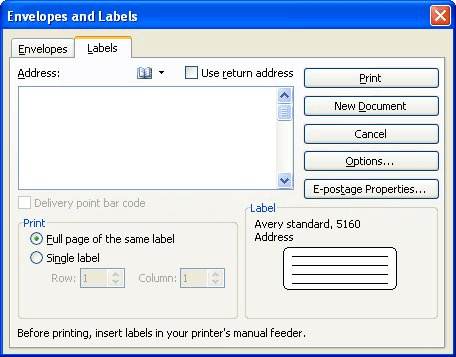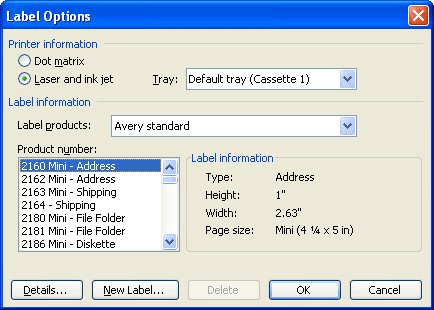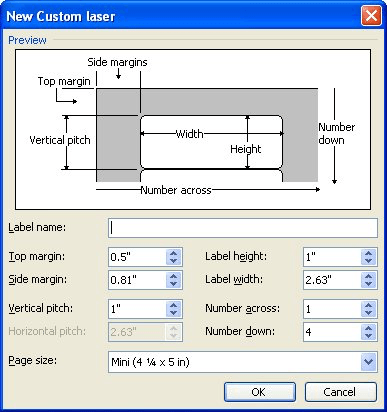Please Note: This article is written for users of the following Microsoft Word versions: 97, 2000, 2002, and 2003. If you are using a later version (Word 2007 or later), this tip may not work for you. For a version of this tip written specifically for later versions of Word, click here: Creating Custom Labels.
Written by Allen Wyatt (last updated March 12, 2022)
This tip applies to Word 97, 2000, 2002, and 2003
One of the big advantages to using standard label stock with Word is that it includes label definitions for dozens of different label types. You can often select the type of label you want to use, by number, from the Label Options dialog box.
At times, however, you may have a need to define your own label. For instance, you may have had a custom label created for your own purposes, or the label you want to use is brand new on the market and there is no definition for it within Word. If you find yourself in this situation, Word allows you complete control over setting up custom labels.
You start from the Labels tab of the Envelopes and Labels dialog box. How you display this tab depends on the version of Word you are using.

Figure 1. The Labels tab of the Envelopes and Labels dialog box.
With the Labels tab of the Envelopes and Labels dialog box displayed, you are ready to follow these general steps:

Figure 2. The Label Options dialog box.

Figure 3. The New Custom Label dialog box.
WordTips is your source for cost-effective Microsoft Word training. (Microsoft Word is the most popular word processing software in the world.) This tip (1885) applies to Microsoft Word 97, 2000, 2002, and 2003. You can find a version of this tip for the ribbon interface of Word (Word 2007 and later) here: Creating Custom Labels.

The First and Last Word on Word! Bestselling For Dummies author Dan Gookin puts his usual fun and friendly candor back to work to show you how to navigate Word 2019. Spend more time working and less time trying to figure it all out! Check out Word 2019 For Dummies today!
Make your money last longer by using your head when printing labels. Here's a great example of how you can double the ...
Discover MoreOnce you create a custom label layout it is a good idea to backup the layout on a different hard drive in the event of a ...
Discover MoreNeed to print more than one copy of mail-merge labels? There are a number of different approaches you can take to getting ...
Discover MoreFREE SERVICE: Get tips like this every week in WordTips, a free productivity newsletter. Enter your address and click "Subscribe."
There are currently no comments for this tip. (Be the first to leave your comment—just use the simple form above!)
Got a version of Word that uses the menu interface (Word 97, Word 2000, Word 2002, or Word 2003)? This site is for you! If you use a later version of Word, visit our WordTips site focusing on the ribbon interface.
Visit the WordTips channel on YouTube
FREE SERVICE: Get tips like this every week in WordTips, a free productivity newsletter. Enter your address and click "Subscribe."
Copyright © 2026 Sharon Parq Associates, Inc.
Comments